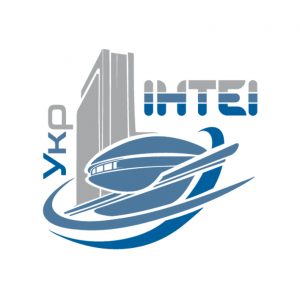http://doi.org/10.35668/2520-6524-2020-1-08
Pivovarov O. A. — Doctor of Science in Engineering, Professor; Ukrainian State Chemical Technology University, 8, Gagarin Av., Dnipro 49005 Ukraine; +38 (0097)342-46-60; apivo@ua.fm; ORCID: 0000-0003-0520-171X
Cheltonov M. M. — Postgraduate Student; State Enterprise Research-Industrial Complex “Pavlograd Chemical Plant”, вул. Кільцева, 6, Kilceva St., Pavlograd 51402, Dnipropetrovsk region, Ukraine; +38 (066)121-90-43; nelonme@gmail.com; ORCID: 0000-0002-8077-1985
THE FEATURES OF THE TECHNOLOGY OF EXTRACTING AMMONIUM PERCHLORATE PRODUCT OF THE DISPOSAL OF SOLID ROCKET FUEL
Abstract. In the process of disposal of solid propellant (SP) from the curb of engines formed polymer matrix with the size of the fragments here 7×4×2–15×4×2 mm, which finds use as energy additive in the composition of emulsion explosives. The polymeric matrix includes: a binder, an oxidizer (ammonium perchlorate), energy supplements (HMX, aluminum) and technological additives. One of the most efficient ways to use polymer matrix is the production of a valuable energy component of ammonium perchlorate, HMX. The aim of this work is to establish the patterns and determination of parameters of the deletion of ammonium perchlorate from the products of recycling of solid propellant. To remove ammonium perchlorate from the polymer matrix, the polymer matrix samples were treated with water at a temperature of 20 °C and stirring for 1–4 hours. The target protein was removed by crystallization in the temperature range 30 °C to 8 °C. the resulting solid phase crystals of ammonium perchlorate was filtered, dried, weighed. According to the results of the experiments obtained for the constants and the General kinetic equation that describes the leaching process of ammonium perchlorate with a polymeric matrix of the solid propellant at a temperature of 20 °C. Microscopic analysis suggests that the results obtained from the polymeric matrix of the solid rocket fuel ammonium perchlorate is a crystal of irregular shape with particle sizes predominantly between 100 and 600 µm, the recovery rate of the target product amounted to 76.8 per cent with a basic substance content of 98,5 %. The extracted product after modification can be used in composite formulations as an oxidizing agent, or as raw material for conversion processing of the latter in the potassium perchlorate, a component of non-electric initiation systems. The data obtained after detailed techno-economic analysis can be considered as a basis for the creation of experimental-industrial production extraction of water-soluble component of solid propellant ammonium perchlorate.
Key words: recovery, utilization, ammonium perchlorate, polymer matrix, solid propellant.
REFERENCES
- Shiman, L. N., Ustimenko, E. B., Golinko, V. I., & So bolev, V. V. (2013). Bezopasnost protsessov proizvodstva i primeneniya emulsionnyh vzryvchatyh veshchestv s komponentami utiliziruemyh vooruzheniy [Safety of processes for the production and use of emulsion explosives with components of utilized weapons]. Dnеpropetrovsk. 526 p.
- Zabelin, L. V., Gafiyatulin, R. V., Ponik, A. N., & Meleshko, V. Yu. (2004). Osnovy promyshlennoy tekhnologii utilizatsii krupnogabaritnykh tverdotoplivnykh zaryadov [Fundamentals of industrial technology for the disposal of large solid propellant charges]. Moscow. 226 p.
- Cheltonov, M. M., Oparin, S. A., Kirichenko, A. L., & Us timenko, E. B. (2019). Optimizatsiya protsessa destruktsii polimernogo svyazuyushchego tverdykh raketnykh topliv s ispolzovaniem azotnoy kisloty [Process optimization of the destruction of polymer binding in solid propellants with the use of nitric acid]. Voprosy khimii i khimicheskoi tekhnologii [Issues of Chemistry and Chemical Technology]. 3. 176–180.
- Ustimenko, E. B., Shiman, L. N., & Cheltonov, M. M. (2009). Konversionnaya obrabotka produktov gidromekhanicheskogo izvlecheniya tverdogo raketnogo topliva dlya polucheniya aktivnogo veshchestva, primenyaemogo v sredstvakh initsiirovaniya i vzryvaniya [Conversion processing of products of hydromechanical extraction of solid rocket fuel to obtain the active substance used in the means of initiation and blasting]. Vysokoenergeticheskaya obrabotka materialov [High Energy Material Processing]. Dnеpropetrovsk. P. 219–228.
- Ustimenko, E. B., Shiman, L. N., Podkamennaja, L. I., & Cheltonov, M. M. (2008). Opyt konversii otdelnykh komponentov TRT i aspekty bezopasnosti dlya ikh ispolzovaniya v kachestve aktivnogo veshchestva v elementakh NSI [Experience in the conversion of propellant components and safety aspects for their use as an active substance in elements of nonelectric initiation systems]. Vestnik KGPU im. Mikhaila Ostrogradskogo [Transactions of Kremenchuk Mykhailo Ostrohradskyi National University]. 1 (48). 100–102.
- Dyachok, V. (2010). Extraction process of intracellular substance. Chemistry & Chemical Technology. 4 (2). 163–167.
- Dyachok, V. (2011). Some kinetic regularites of intracellular substancec extracting. Chemistry & Chemical Technology. 6 (4). 469–472.
- Dyachok, V. (2013). Оn the mechanism of extraction from solid bodies cellular structure. Chemistry & Chemical Technology. 7 (1). 23–27.
- Poulin, I. (2010). Literature Review on Demilitarization of Munitions. Prepared for the RIGHTTRACT Technology Demonstration Project. Quebec: Defense R&D Canada — Valcartier. 64 p.
- Kim, K. J., Kim, H. S., & Sim, J. S. (2013). Solubilities of Octahydro1,3,5,7tetranitro1,3,5,7tetrazocine in gButyrolactone + Water, Dimethylsulfoxide + Water, and NMethyl pyrrolidone + Water. Journal of Chemical & Engineering Data. 58 (9). 2410–2413. https://doi.org/10.1021/je400199m

